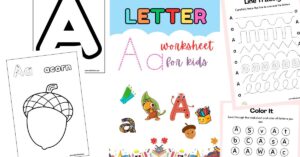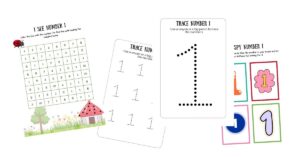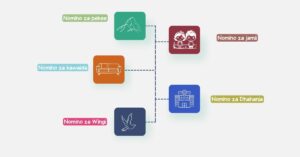Finding nutritious and child-approved snacks can sometimes feel like an impossible task. Before I found snacks my little one liked, we lived on juice boxes, candy and cookies. All they did was fill my evenings with sugar-fueled chaos and energy crashes while doing nothing to help promote her learning or growth, which made homework and evening study a mess.
I wanted to change that, which led me to look around for nutritious study snacks for kindergarten students that boost brain power.
In my pursuit, I discovered these awesome gems, and today I will share my favorite nutritious study snack with you.
But first, what exactly is a study snack?
A study snack is a small portion of food eaten in between meals. It should be lighter than a meal and is basically meant to curb hunger and serve as a quick energy boost. A snack can be sweet or savory and includes everything from fruits, veggies, nuts, yogurt, and other easily consumable foods.
Study Snacks Ideas for Kindergarten Students
Fueling tiny tummies and growing bodies is about balancing your child’s nutrition needs in the evening so they are ready to tackle their homework.
Fruit and Veggie Power
These colorful options contain vitamins such as B12, A, C, minerals such as iron, zinc and magnesium, and fiber that help little bodies and minds grow strong.
If you are looking for something sweet and juicy, try:
- Berries such as strawberries or blueberries,
- Grapes
- Apples
- Peaches
- Bananas
- Pears
- Plums
- Melons such as cantaloupes, honeydew, or watermelon
For a more tangy or tart alternative, go for:
- Oranges, including tangerines or clementines
- Pineapples
- Kiwi
- Raspberries
- Cherries
For veggies, these crunchy and colorful options are always a hit
- Baby carrots
- Cucumber slices
- Bell pepper strips – choose red, yellow, or orange for bright colors and sweetness.
- Broccoli florets
- Snap peas
- Cherry tomatoes
- Avocado slices
- Celery sticks
- Zucchini slices
Serving suggestions:
- Fruit or veggie skewers. You can mix the fruits to create rainbow skewers, which are a fun way of learning about colors, textures, and shapes.
- Add fruit to smoothies.
- Make fruit salads.
- Eat them with dips- Veggies go especially well with dips. Pair those baby carrots, cucumbers, or bell pepper strips with creamy avocado dip or some hummus.
- Turn them into popsicles, perfect for a hot day.
- Add fruits or veggies to muffins.
Here’s one of my favorite fruit snack recipes for kids.
Sparkling Strawberry Smoothie
You will need
- 1 cup fresh strawberries
- 1/2 cup plain Greek yogurt
- 1/2 cup milk
Instructions
- Blend all ingredients until smooth and creamy.
- Pour into fun cups. You can also top it with crushed nuts or a touch of chia seeds for flavor.
Whole Grain Goodness
Whole grains such as oats, quinoa or whole wheat are complex carbohydrates that offer a great alternative to sugary, empty carbs often found in many kids’ snacks. They help fight off hunger thanks to their slow-releasing carbs and are also packed with other beneficial nutrients, such as fiber, which aids digestion. With a steady supply of energy, your little one can focus and concentrate while studying.
These whole-grain grab-and-go options are a great place to start. Try:
- Whole grain cereal bars or granola bars
- Whole wheat or graham crackers paired with delicious dips, cheese or nut butter
- Applesauce pouches with whole-grain blends
- Whole wheat muffins, sconces, pretzels or bagels paired with cream cheese or nut butter
- Rice cakes or crispy treats
- Trail mix with whole grain cereal and nuts. You can add dried fruit
- Cheesy quinoa
Here’s a simple whole-wheat pancake recipe that makes delicious snacks for studying
Whole Wheat Pancakes
Ingredients
- A cup of whole-wheat flour
- 1 1/2 teaspoons of baking powder
- 1/2 teaspoon of salt
- A cup of milk
- 1 egg, beaten
- 1 tablespoon honey (optional)
Instructions
- Whisk the flour, salt and baking powder in a bowl.
- In a separate bowl, mix the egg, milk and honey if you choose to add it.
- Pour this mixture into the flour one and mix until well combined.
- Heat a lightly oiled pan over medium heat and pour the batter, forming small pancakes.
- Cook them on each side for 2-3 minutes or until golden brown.
- Serve with fresh fruit, yogurt, or a drizzle of honey (optional).
Protein Pals
Proteins are the main source of amino acids, the building blocks for muscle, bone, skin, hair and blood. Getting enough protein means your little learner grows properly, develops a strong immune system, and has everything they need to repair those playground bumps and bruises. Additionally, protein takes longer to digest, providing a steady energy source, helping power them through their study sessions, and avoiding mid-morning hunger pangs or energy crashes.
Protein-rich snacks also contain nutrients that support healthy brain function and cognitive skills, such as Omega-3, while magnesium and vitamin B12 help moderate stress, reducing cortisol’s effects on their little bodies.
Here are a few kid-friendly, protein-rich snack options you can try
- Eggs – there are so many ways to enjoy eggs: hard-boiled eggs, deviled eggs, egg wraps, or egg muffin cups make great portable, protein-rich snacks.
- Yogurt – aside from proteins, yogurt is also rich in probiotics, calcium, and essential vitamins and minerals. Opt for unsweetened yogurt with live active cultures such as Greek yogurt. Your little learner can have yogurt on its own or pair with fresh fruit, nuts, or granola.
- Lean deli meat – roll up turkey, ham or roast beef slices with cheese or veggies for a perfect protein-rich study snack.
- Mini beef or chicken skewers with fruit – marinate bite-sized pieces of beef or chicken and thread them with pineapple or grapes for a sweet and savory treat.
- Cheese – cheese sticks, slices or cubes are nutritious options and fun additions to any snack. Look for low-fat varieties.
- Nut or seed butter – butters such as almond, peanut or sunflower seed butter are a good way to add a protein punk to other snacks. Smear them onto apple slices, crackers or veggie sticks for a delicious, healthy snack.
- Hummus – made from chickpeas, it provides fiber and makes a delicious dip. It goes great with crunchy veggies or whole-grain pita chips.
- Edamame – steamed or roasted soybeans are a great source of plant-based protein and fun to pop in your mouth.
- Tuna packets or pouches – go for low-sodium options and pair with whole grain crackers for an easy snack.
Here’s a fun, simple recipe that makes awesome snacks for studying.
No-bake peanut butter balls
You will need
- A cup of rolled oats
- 1/2 a cup of peanut butter
- 1/4 a cup of honey
- 1/4 a cup of your preferred toppings. You can use mini chocolate chips, chia, berries or crushed nuts (optional)
Instructions
- Combine the oats, butter, honey and toppings in a bowl and mix well.
- On a clean plate, roll the mixture into bite-sized balls. Then, let them chill in the refrigerator for about 30 minutes before serving.
Why Young Kids Need Healthy Study Snacks
The benefits of healthy snacks for studying go beyond a simple energy boost. Let’s look at how these snacks can transform your little one into a learning superstar.
Enhanced concentration
Nutritious snacks provide your child with brain-boosting nutrients such as Omega-3 fatty acids, iron, and more, which contribute to improved concentration, problem-solving skills and memory, potentially boosting learning abilities. Additionally, snacking helps curb hunger, which can distract your child and prevent information retention. Once they have something to eat, they are more comfortable and more likely to focus while learning.
Also read: Brain Development Food for Autistic Child [A Guide]
Sustained energy levels
Healthy snacks have protein, fiber, and complex carbohydrates that steadily release energy, unlike sugary, processed treats that contain empty calories and cause energy crashes. With this steady energy supply, your little kindergartener can comfortably engage in learning without crashing from a sugar energy spike.
Supports healthy growth
Healthy snacks provide all the nutrients your child needs to grow healthy and strong. For example, healthy fats such as Omega-3 and antioxidants support proper brain development and can improve memory and cognitive function. These nutrients also support the production of serotonin, a feel-good hormone that can affect the child’s emotional state, allowing them to study better.
Builds healthy habits
What your child eats now forms the foundation of their future relationship with food. If they become dependent on unhealthy foods, they will shun healthy options and can develop chronic diseases later on. By introducing healthy snack options now, you are nurturing a love of healthy eating and instilling healthy eating habits they can carry into adulthood.
It’s another way to learn
Food can be a powerful learning tool. Involving your kid when choosing, preparing and even decorating their study snacks creates a fun and engaging way to explore colors, shapes, and tastes. Think fruit skewers with different textured fruits and flavors or fruit and veggie faces using cookie cutters – the possibilities are endless!
Prevents overeating
Well-balanced snacks such as whole grains and fiber-rich foods are a great way to curb excessive hunger between meals. Kids aged 2 to 4 need about 1000 calories a day. After a long day filled with playing and learning, they can get really hungry and might overeat. A continued habit of overeating can contribute to obesity and overall health issues.
Healthy snacks do more than fill your kindergartener’s tummy; they can help unlock their learning potential. Now, let’s look at some healthy study snacks for kindergarten students.Â
Study Snack Time Tips
Here are a few tips to remember as you add these healthy and delicious snacks to your little one’s lunch boxes to power their learning journey.
- Involve your child when making or choosing the snacks to have. This will help get them excited about these healthy snacks and goes a long way in reinforcing healthy eating habits. Get creative and make it an adventure by arranging the snacks in themes to heighten the excitement.
- Pack the snacks in small portions in containers or bags. This prevents overeating and makes it easy to grab and go.
- Make food fun by cutting fruit or veggies into interesting shapes with cookie cutters and mixing different colors and textures.
- You can include a small treat or surprise, such as a fun sticker or a tiny toy, to make snack time extra special and encourage them to look forward to studying.
- Change things up by rotating through different types of snacks to keep things interesting. This element of surprise makes snack time more enticing. Offer a mix of textures, flavors, and colors. Think crunchy crackers with creamy cheese, sweet fruit with savory nuts, or a refreshing yogurt parfait.
- Keep cold stuff cold using small insulated bags, freezer packs and thermoses to keep perishable foods like yogurt, cheese, and fruit chilled.
- Remember to stay hydrated. Ensure your little one has some water to sip on as they study and snack.
- Be mindful of any allergies and provide safe alternative snacks as needed.
- Read labels carefully when buying snacks even though they are labeled as healthy. Watch out for added sugars, unwanted additives and unhealthy fats in pre-packaged selections.
Ready to watch your little explorer embark on learning adventures fueled by delicious brain-boosting snacks for studying?
We have explored so many healthy snacks you can get or make for your child to fuel their growing brains and bodies, ignite their curiosity and turn learning into an adventure. From eye-catching rainbow fruit or veggie skewers to creamy avocado dips, hummus, power-packed protein snacks and filling whole-grain goodness, you have an endless list of options to try. So forget those sugary, processed snacks full of empty carbs; fill your little one’s lunch box with these healthy alternatives, and watch them shine.
You can try fresh fruits like apple slices, bananas or grapes; veggies with dips; peanut butter or cheese crackers; whole grain cereal or granola bars; and yogurt with berries or granola.
Let them help pick out new snacks at the store. Present them in fun shapes with cookie cutters. Pair a new food with a familiar favorite. Offer just a taste at first, and be patient with repeated exposures. Praise them for trying something new. Stick to one new food at a time.
Pre-packaged snacks can be a convenient option, but read labels carefully. Look for short ingredient lists, whole grains, real fruits/veggies, and minimal added sugar.
Let them wash fruits and vegetables. Have them mix trail mixes and granola. Bake zucchini muffins or energy bites together. Let them assemble their own snack packs and decorate bags and containers. Children are more likely to eat snacks they help prepare.

![Study Snacks for Kindergarten Students [3 Food Groups to Buy]](https://activelittlefeet.com/wp-content/uploads/2024/01/Study-Snacks-for-Kindergarten-Students-3-Food-Groups-to-Buy.jpg)


